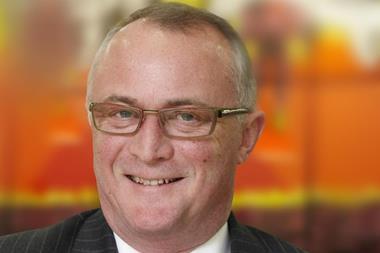Lloyd’s insurer’s Sandy and Costa Concordia claims higher than expected

Lloyd’s insurer Catlin made a 2012 profit after tax of $305m (£194.5m), eight times the $38m profit it made in 2011.
The company’s combined ratio improved by 12.6 points to a profitable 90% (2011: 102.6%) thanks to fewer natural catastrophe claims.
(Re)insurers were hit hard by a series of natural catastrophes in 2011, including the Thailand floods and earthquake in Japan and New Zealand. However, 2012 was a more average year, meaning better performance for most companies.
Growing losses
Catlin’s improved 2012 result came despite a higher-than-expected claims bill from Superstorm Sandy, which hit the US east coast last October, and the Costa Concordia cruise ship disaster.
The insurer had originally predicted a loss of $200m from Sandy, but it now expects it to cost $225m. Catlin had originally put is Costa Concordia claims bill at $35m, but it ended up paying $51m.
The company was also affected by falling investment returns. Total investment return dropped 32% to $173m (2011: $256m) because of low interest rates and global economic uncertainty.
On the positive side, Catlin said its $788m net underwriting contribution (net premiums earned minus claims) was a five-year record.
Hardening rates
Chief executive Stephen Catlin praised the overall result. He said: “The value of Catlin’s operating strategy was clearly demonstrated by the group’s performance during 2012, during which the group produced a return on net tangible assets of 14.6% and a return on equity of 11.3%”.
“We aim to build on this performance. Market conditions for many classes of business are currently good. Pricing for catastrophe-exposed business is at a high level, following rate increases in 2011 and 2012, as well as further rate improvements for US Property reinsurance at 1 January 2013 renewals in the aftermath of Superstorm Sandy. There is also an improving environment for certain lines of non-catastrophe business, such as US casualty classes.”
Increased reinsurance spend
Catlin’s gross written premium increased 10.2% to $5bn, from $4.5bn. However, net written premiums and net earned premiums were flat because of increased reinsurance spend.
Catlin set up several special purpose syndicates in 2012 to reinsure itself and therefore increase its underwriting capacity. It also bought adverse development cover (ADC) in 2012, which protects against the risk of loss reserves for Catlin’s 2009 and prior underwriting years being insufficient to pay claims. It renewed the cover for 2013.
The company said in a statement: “We believe that these arrangements offer real benefits to Catlin and its shareholders by providing access to a cost-efficient source of capital without diluting the interest of current shareholders. The ADC is a prudent way to reduce the risk of prior-year reserve deterioration, whilst allowing Catlin to still benefit from reserve releases.”
Catlin’s 2012 results in $m (compared with 2011)
- GWP: 4,972 (4,513)
- Net premiums earned: 3,604 (3,612)
- Net underwriting contribution*: 788 (324)
- Total investment return: 173 (256)
- Profit before tax: 339 (71)
- Profit after tax: 305 (38)
- Combined ratio (%): 90 (102.6)
- Return on equity (%): 11.3 (1.3)
*Net underwriting contribution is defined as net premiums earned less losses and loss expenses and policy acquisition costs
Hosted by comedian and actor Tom Allen, 34 Gold, 23 Silver and 22 Bronze awards were handed out across an amazing 34 categories recognising brilliance and innovation right across the breadth of UK general insurance.












































No comments yet